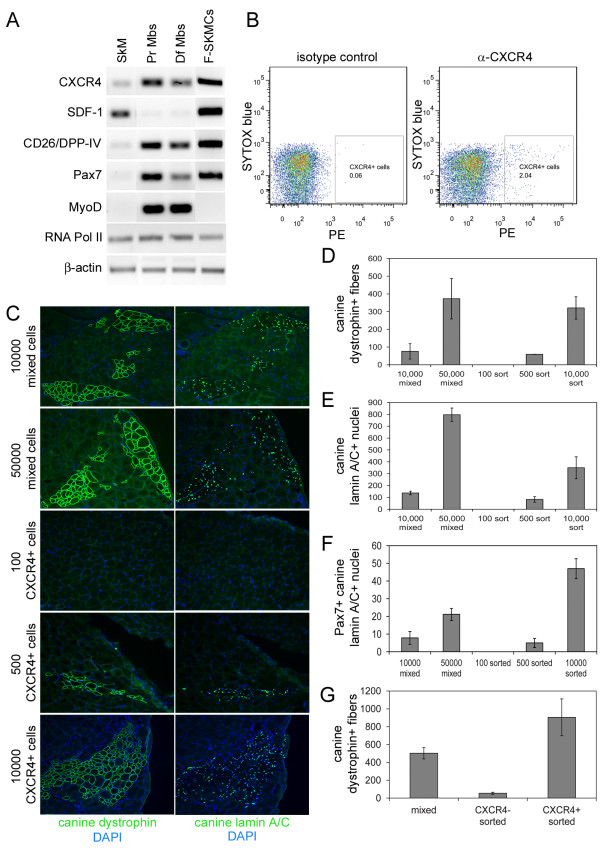Figure 3.
Sorting for CXCR4-positive cells does not enhance engraftment. (A) RNA isolated from whole canine skeletal muscle (SkM), proliferating canine satellite cell-derived myoblasts (PrMbs), differentiating myoblasts (DfMbs), and freshly isolated canine muscle-derived cells (F-SkMCs), was reverse transcribed and amplified using primers for the genes indicated. (B) Canine muscle-derived mononuclear cells were incubated with anti-CXCR4 and PE-labeled secondary antibody, or isotype control and PE-labeled secondary antibody, and SYTOX blue to label dead cells, and sorted using FACS. The population of CXCR4-positive:SYTOX blue-negative cells indicated by the box were collected and prepared for injection. (C) Cryosections from mouse muscle injected with 1 × 104 or 5 × 104 freshly isolated mixed canine muscle-derived mononuclear cells, or 100, 500, or 1 × 104 CXCR4-positive sorted cells, were immunostained with anti-dystrophin (MANDYS107) or anti-lamin A/C, and fluorescently labeled secondary antibody. (D, E, F) The number of fibers expressing canine dystrophin (D), the number of nuclei expressing canine lamin A/C (E), and the number of nuclei expressing canine lamin A/C and Pax7 (F) per cross-section were determined. The bars represent the average of the averages ± SD, where the average was calculated from three cryosections per mouse, and the average of the averages was calculated from three mice per condition. (G) Cryosections from mouse muscle injected with 1 × 104 freshly isolated mixed canine muscle-derived mononuclear cells, CXCR4-negative sorted cells, or CXCR4-positive sorted cells were immunostained with anti-dystrophin (MANDYS107) and fluorescently labeled secondary antibody. The number of fibers expressing canine dystrophin per cross-section was determined. The bars represent the average of the averages ± SD, where the average was calculated from three cryosections per mouse, and the average of the averages was calculated from three mice per condition.

